The internet is full of slightly different variations of the same advice for how to increase organic leads — identify your target audience, choose high volume keywords, include video, etc.
These are all fine tactics, but we’ve found that all of this advice is based on a fundamental strategic flaw: it’s focused on increasing traffic, with the assumption that more organic traffic equals more organic leads.
But in our experience over the past 6+ years of helping dozens of companies increase organic leads (with data we share below), we’ve found that the number one way to increase organic leads is to identify and rank for keywords with high buying-intent, even if they don’t get a ton of traffic.
As we’ll share below, the difference in buying intent between different SEO search terms affects organic leads way more than traffic differences. We also cover several other common approaches, their flaws, and what we’ve found works better for maximizing organic lead generation.
If you want help increasing organic leads with SEO content, you can learn more about our agency here and reach out about working with us here.
Generic Advice #1: Prioritize traffic when doing keyword research
One of the main reasons many marketers prioritize traffic when choosing keywords to target is because they believe that if tons of people are visiting their blog, some of those people must inevitably convert (either now or in the future).
But in our experience, the conversion rate for organic traffic from low-intent keywords can be extremely low (<0.01%, or often 0%). As a result, even if those pieces get tons of traffic, they often don’t generate many (or any) leads at all.
Let’s look at an example to see why.
A project management software company might target ‘project management’, which according to Ahrefs has a monthly search volume of 65,000 — a very high search volume for the B2B software space.

On the surface, this looks like a great keyword — there’s tons of searches per month and it’s literally the topic that the company’s product is based on. But, anyone could be Googling this…
- A stay-at-home mom whose kid wants to major in project management
- A college student writing a paper
- An unhappy worker who’s halfheartedly considering switching careers
- A grandparent who’s trying to figure out what their grandkid even does for a living
- An employee who was just offered the title of project manager because of recent company shifts
…the list goes on.
Indeed, Google’s results (often called the SERP, or “search engine results page”) show that it knows people searching for ‘project management’ just want basic definitions. The first result (featured snippet) is literally the Wikipedia page for ‘project management’.
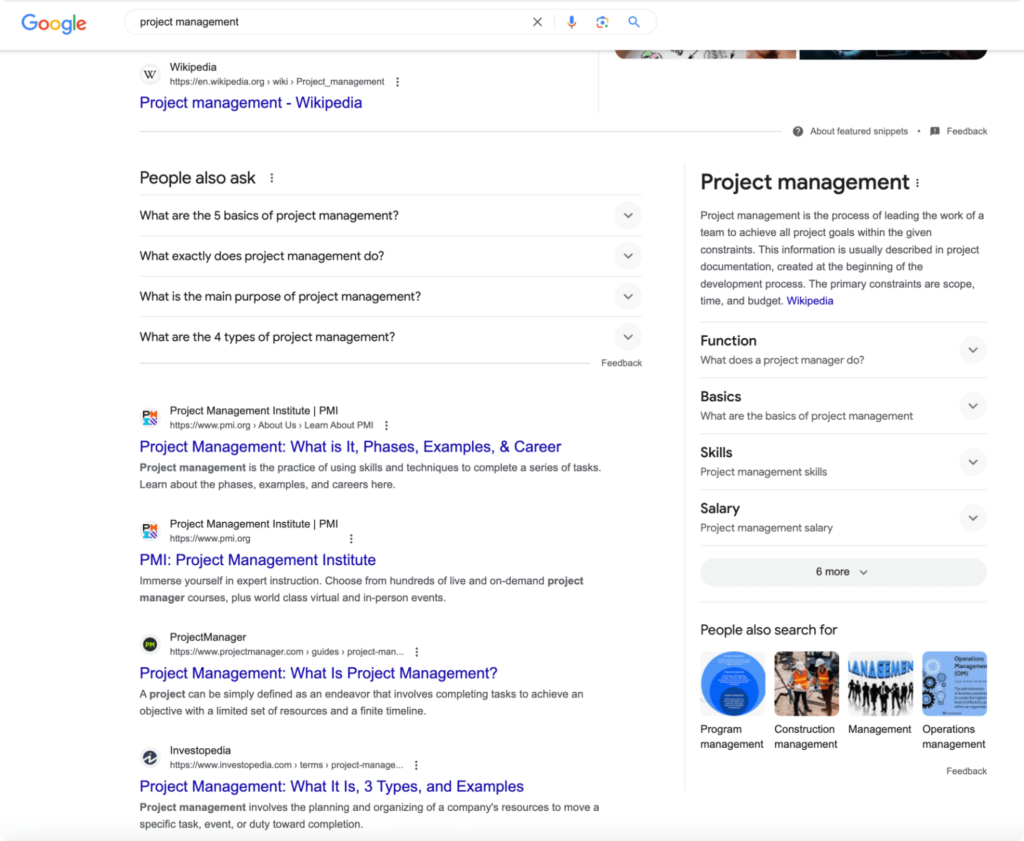
So while it’s true that the unhappy worker Googling ‘project management’ could eventually switch careers, get a job in project management, be put in charge of buying new project management software, and remember that that product exists, the chances of that happening require a bunch of low probability events happening one after another. Plus, it likely won’t be happening any time soon.
As a result, the organic conversion rate from the keyword “project management” to trials or demos of project management software will be extremely low because tons of people searching that phrase are not in the market for project management software.
(Sure, if your content marketing or SEO resources are infinite, you could go after that keyword — it certainly couldn’t hurt. But no one has infinite resources, so that’s why we think going after higher converting keywords is a much more efficient strategy for increasing leads, as we’ll explain next.)
Grow and Convert Advice: Prioritize buying-intent when choosing keywords
In our experience, if you want to increase leads, nothing matters more than identifying and ranking for keywords with high buying-intent. You could take this piece of advice and ignore the rest of this post and you’d be able to increase leads.
To illustrate this, consider the slightly different keyword, ‘project management software’. Google’s results for this query are totally different that just ‘project management’ and are exactly what logic would tell you the intent for this keyword is: people looking to research or buy project management software:
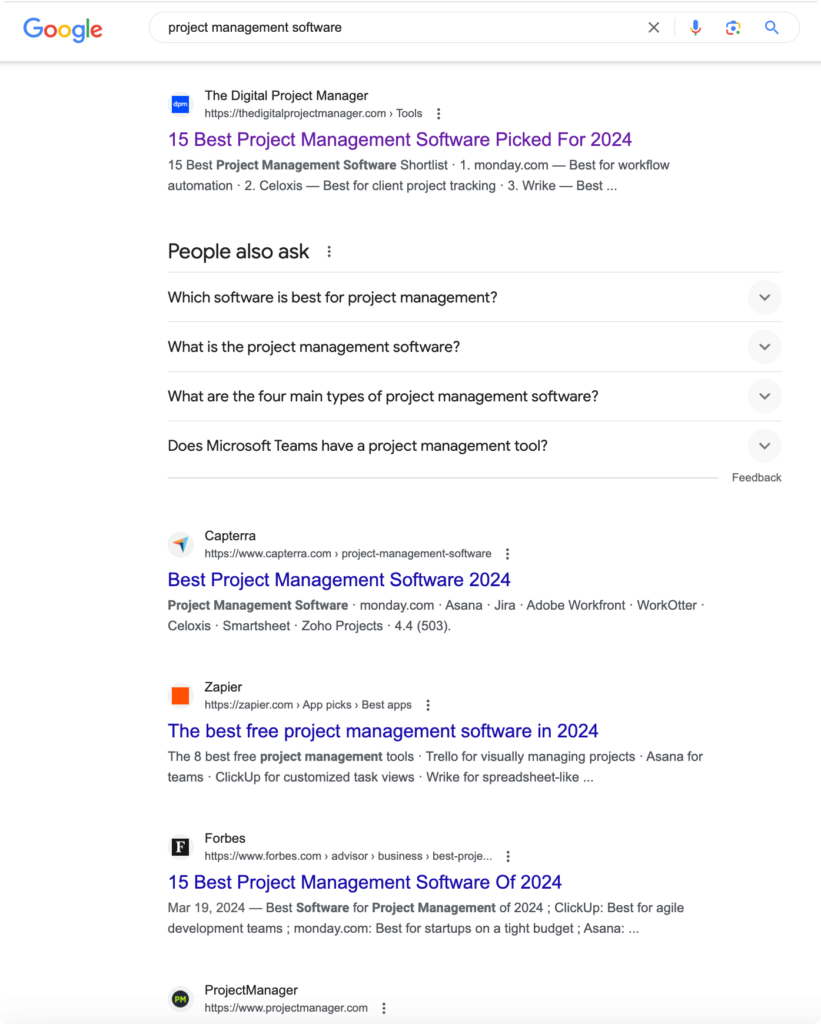
In other words, this query has “high buying intent”. It doesn’t take much leap of faith to realize that the conversion rate for this keyword is way higher than for just “project management”.
To quantify this, consider the case of Geekbot, one of our self-service SaaS clients. We analyzed over 60 posts we wrote for them and saw significantly higher conversion rates for high buying-intent (i.e., bottom of the funnel) keywords than TOF keywords.
In the graph below, you can see that bottom of the funnel (BOTF) keywords had an average conversion rate of 4.78% whereas TOF keywords had an average conversion rate of 0.19%.
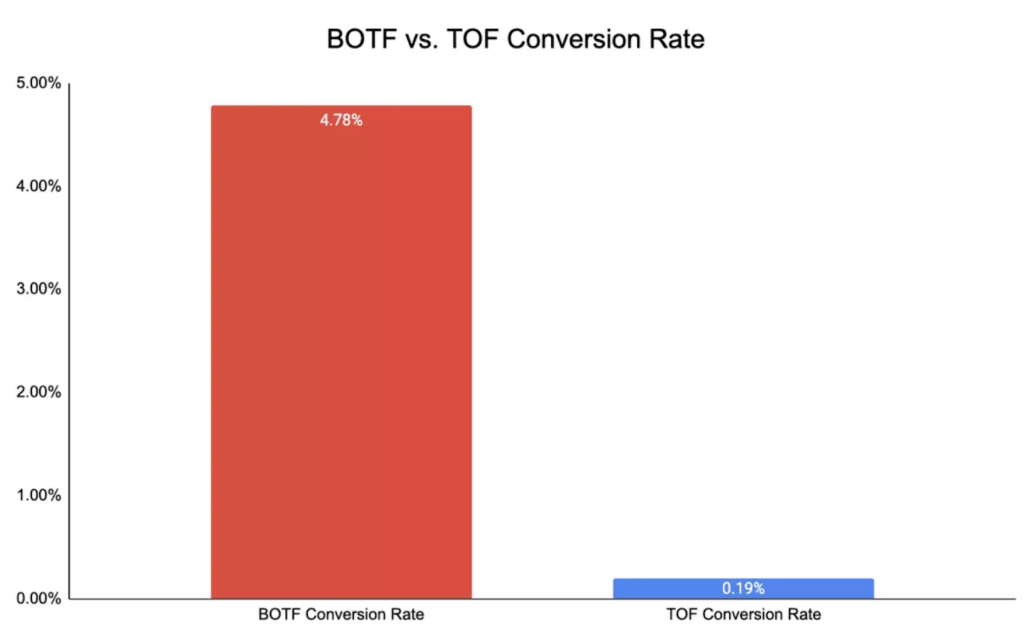
Now, you may be thinking that despite the higher conversion rate of BOTF content, you’d be able to get more conversions overall with TOF content simply because of the higher volume of traffic. So, let’s look at that next.
In the first screenshot below, you can see that TOF content brought in significantly more traffic than high buying-intent or bottom of the funnel (BOTF) content — nearly 200k pageviews for TOF versus <50k for BOTF.
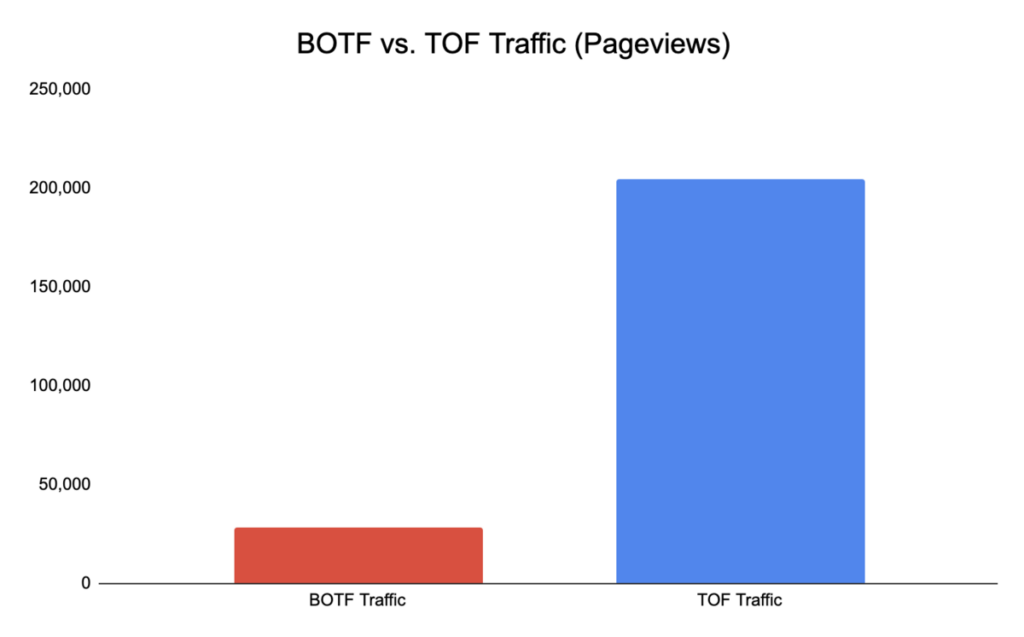
However, despite that massive advantage in traffic for TOF content, the BOTF content we produced brought in over 3x the number of conversions.
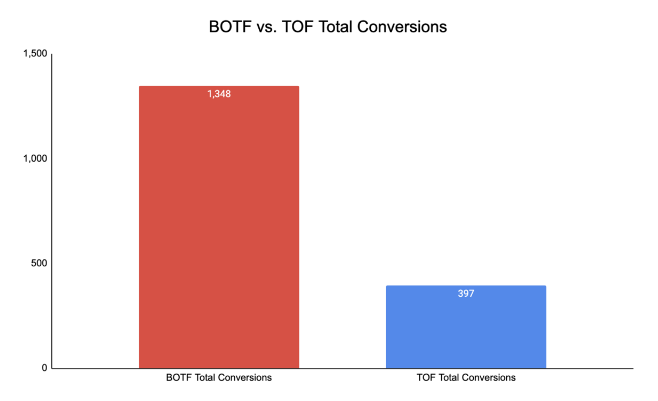
And this isn’t just true for Geekbot — prioritizing buying-intent is at the core of the strategy we use for all of our clients.
You can read more case studies here.
Generic Advice #2: Identify your target audience
The typical advice here is to create one or more fictional characters that represent your buyers and fill in details such as where they work, what role they’re in, how much money they have to spend, how old they are, likes/dislikes, etc.
The general idea is that if you can identify who these people are, what topics they’re interested in, where they hang out online, etc., you can then write about relevant topics and post it in their social circles and some of them will convert.
However, none of this information indicates that they’re ready to buy your product now or even in the future.
Grow and Convert Advice: Identify the keywords your audience would Google when they’re ready to buy
In order to identify what people are Googling when they’re in the market for a product/service like yours (i.e., high buying-intent keywords), you need to understand what pain points they have that your product/service solves. We call this Pain Point SEO.
The best way to identify these pain points is to talk to your sales and customer success teams. They know best what problems are brought up on sales calls, which parts of your solution clients get excited about, which solutions close the sale, etc.
Once you have a good understanding of what your target audience’s pain points are, you can then find keywords that indicate the searcher has those pain points and is ready to invest in a solution to solve them. These keywords, as we explained above, have buying intent and therefore will convert at a decent rate.
As a result, we’ve found that the pain points and thus buying intent of the searcher is more important than whether they fall into one of your buyer personas.
In other words, for organic lead generation — since pretty much everything starts from a Google search — what the person is looking for is a better way to segment your audience than who the person is. Who cares if they have a certain job title? If they’re not in the market for your product, it doesn’t matter.
Having written thousands of BOTF pieces for clients over the years, we’ve identified that most high buying-intent keywords fall into three buckets:
- Category keywords: These are just different ways to describe the service/product that you offer.
- Competitor comparison and alternatives keywords: This reader is looking for options to compare potential solutions.
- Jobs-to-be-done keywords (JTBD): This reader is typing in the exact problem they’re trying to solve in hopes of finding a solution.
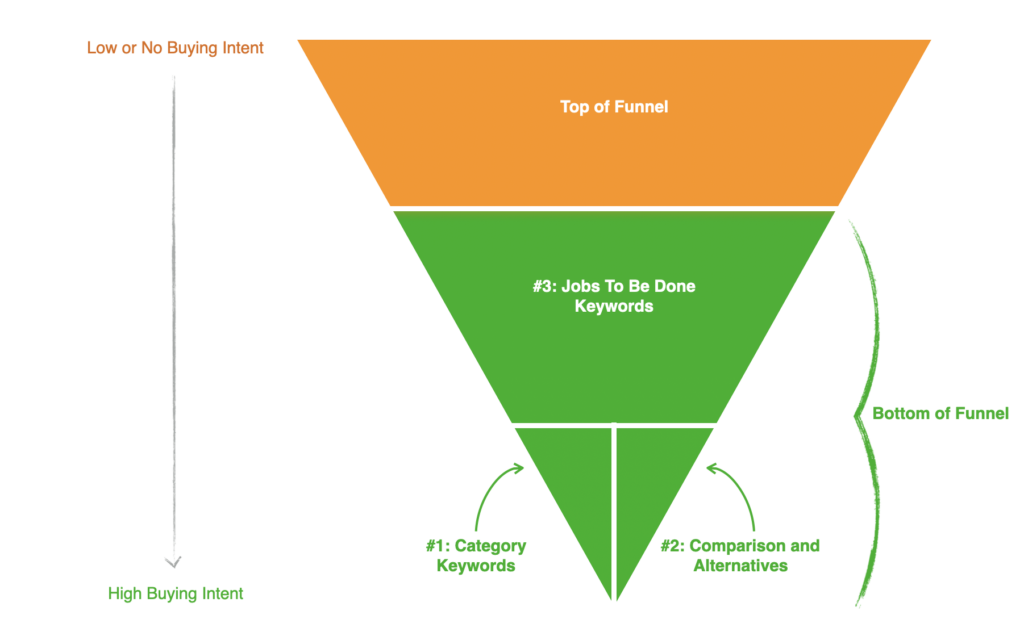
The first two buckets encompass readers who know that a product/service like yours is the solution to their problem. Readers in the last bucket don’t yet know what the solution to their problem is, but they’re ready to invest in solving it. So, even though the third bucket moves up the funnel (as shown in the graph), JTBD keywords still tend to have high buying-intent.
Generic Advice #3: Publish good content (blog posts, whitepapers, infographics, etc.)
One of the most common pieces of advice for getting results from SEO is to create “high-quality content”, but very few guides actually define what good content is. Even if they do attempt to give you some tips for creating good content, those tips are usually along the lines of “use descriptive headers”, “include interesting statistics”, or “write at least 2000 words”.
While some of these tips might be helpful, they don’t really get to the heart of what good content is or truly offer anything helpful or actionable.
Grow and Convert Advice: Write blog posts at the readers level and fulfill search intent
SEO content should fulfill search intent and convert. So, “good quality content” isn’t one thing — it’s dependent on the search term you’re writing for and is defined by how well you accomplish both of those goals.
That means you need to:
- Understand what knowledge the reader already has and where they need to be educated. For example, with B2B audiences, if they search for a BOTF term like “enterprise accounting software,” you automatically know that the reader is trying to buy software for their job, presumably a job they’ve held for years. This means you won’t be able to impress them with beginner level content that introduces the basics of why accounting software is important, what it does, etc. Explaining those basics may be “good content” for a keyword like “accounting best practices” but it doesn’t make sense for “enterprise accounting software”. You’ll need to show that you know more about the topic than they do.
- Sell and position your product in a way that solves their most urgent needs. Keywords with high buying-intent automatically require that you give a good sales pitch for your product because that’s what the reader is looking for. In order to do this, the writer has to be intimately familiar with your product or they have to interview someone who is. You won’t be able to produce a post that smartly sells your product by simply handing a writer a content brief and expecting them to research the arguments on their own.
We get into each of these points more thoroughly and share our process for creating high quality blog posts in the following articles:
Generic Advice #4: Use Social media for brand awareness
“Organic lead generation” typically means SEO, however, some marketers also include leads gained from social media that you didn’t pay for as organic leads. So, we’ll cover that here.
Many marketers suggest that you figure out where your target audience hangs out and build a presence there as a way to drive organic leads. We used this process ourselves to grow our blog to 32,977 unique visitors in 5 months using only content promotion via communities. However, as you’ll notice, we increased traffic — not leads.
While social media can help drive some initial traffic to your blog posts, it’s not an efficient long-term solution for increasing organic leads because the traffic is temporary (“spikey”). If something gets traction or virality on social media, then you may get a spike of traffic, but it dies quickly, often within a day or two.
In contrast to organic search (aka SEO), traffic is far more evergreen — once you rank, you typically stay in that spot for months or even years (with some basic SEO maintenance activities like content updating or link building).
Grow and Convert Advice: Promote content on social media and move on
Share your content on social media to encourage short term traffic, but focus most of your energy on ranking for high buying-intent keywords on Google.
Generic Advice #5: Include videos
Lots of marketers like to tout the importance of using video to get organic leads, however, it’s very rarely necessary in order to rank for high buying-intent keywords and get organic conversions. Plus, it can be very time-consuming and expensive to produce quality video content.
Grow and Convert Advice: Only use if it’s really necessary for intent
If the SERP includes a section for videos or all of the top ranking pieces include video, it shows that the reader may be interested in seeing a video in which case a video may be necessary in order to rank.
For example, ‘how to set up GA4’ may be a good opportunity to include a video as the SERP for it includes a section of videos, meaning Google’s algorithm has determined that a decent fraction of searchers want a video for this query.
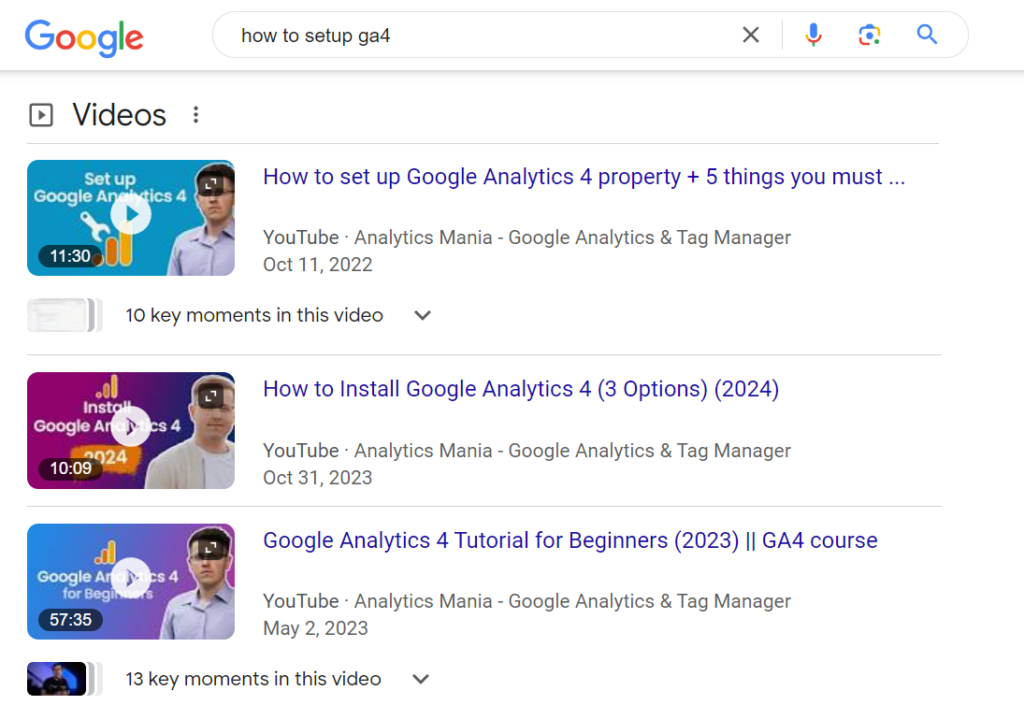
However, you can also simply include lots of helpful visuals in lieu of video content like we do in this post.
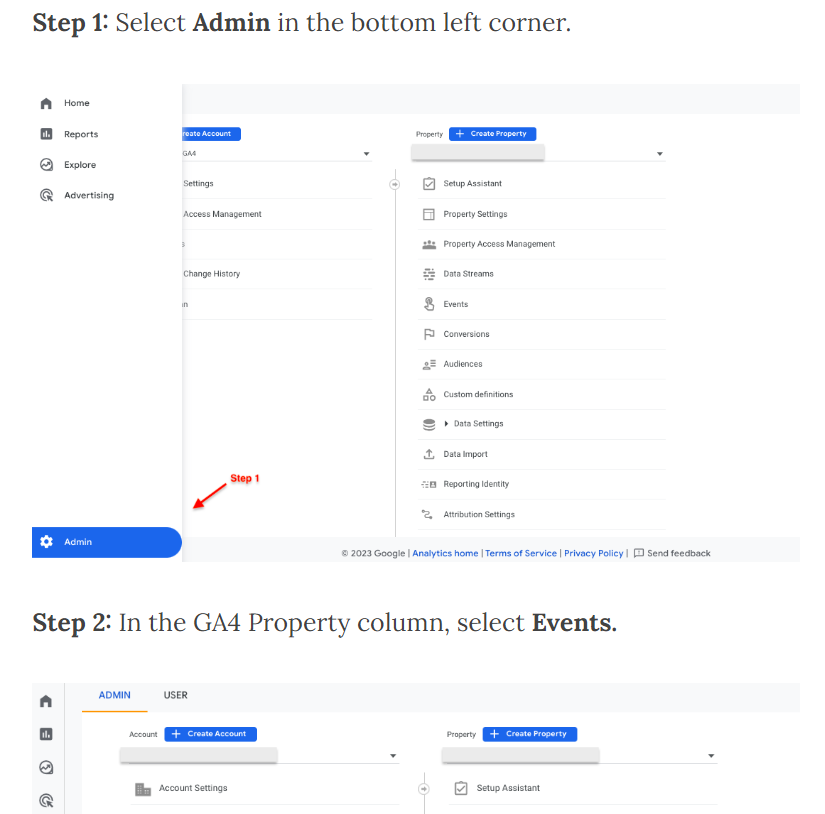
But 9 times out of 10, the SERP won’t include video — especially if you’re targeting high buying-intent keywords such as ‘best legal assistant software’ or ‘CRM for small businesses’.
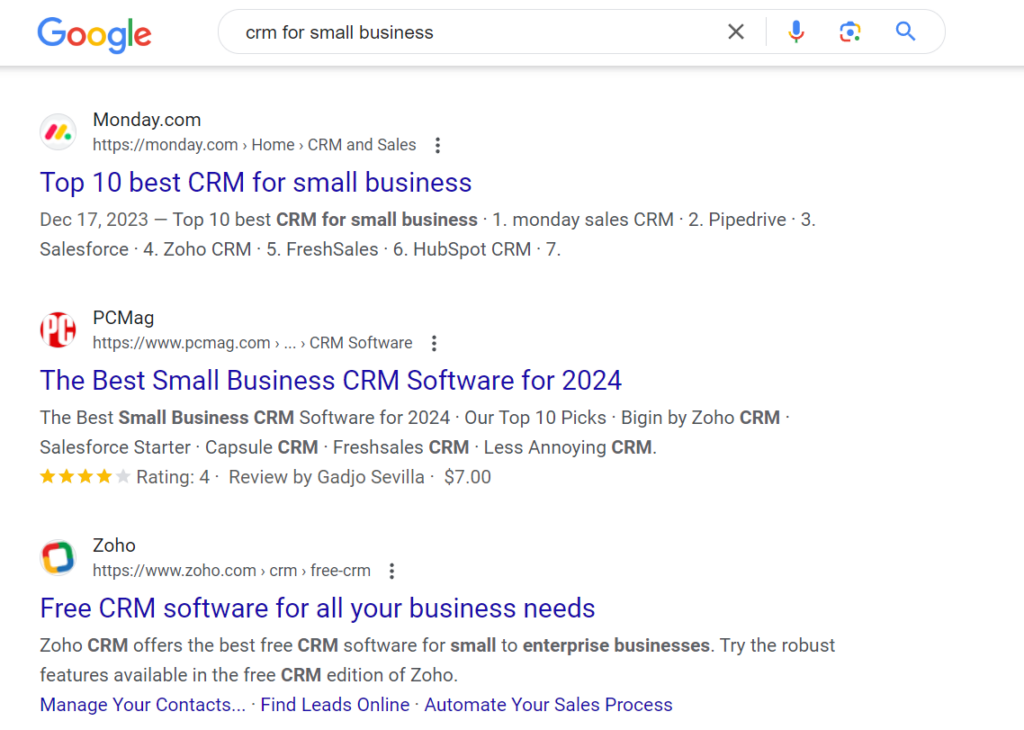
None of the results for either of these keywords have video, so why would you spend the time and money on including a video?
Note: If you already have videos on the topic, you can add that to your blog posts. However, we don’t recommend going out of your way to create it, and you’ll want to think carefully about where you place it. For example, if the reader just wants a quick list of options, making them wade past video content may not be the best idea. However, if you’re going to be using lots of screenshots and visuals throughout the post anyway, you could give the reader the option to view the video instead.
FAQ
What Are the Benefits of Organic Lead Generation vs. Other Forms of Lead Generation?
The number one benefit of organic lead generation is that it’s a one-time cost that continues to generate leads long-term. Because it’s largely a ‘one and done’ investment, you can increase the total number of leads over time without investing too much additional time and effort. (Note: Nothing of course is perfectly ‘one and done’. Whatever content you create will eventually need to be updated as the SERP and your product change over time.)
Other forms of lead generation — paid search, paid social, outbound sales, podcasts, webinars, etc. — require an ongoing budget. While you may get a large influx of leads from hosting a webinar, for example, you’ll have to host another webinar every time you want new leads.
Is Organic Lead Generation Free?
Organic lead generation isn’t free initially — you have to pay someone to do keyword research, write the posts, etc. — however, if done right, the leads generated from SEO content should more than make up for all investments over time.
You can learn more about what to expect in terms of ROI from SEO content in this post.
How Long Does It Take to See Results?
In this post, we go over how long it takes to rank on the first page of Google using real results from clients. Our findings show that while it takes about five months for new posts to rank on the first page of Google, most posts are on the first page within a year.
How Important is Page Layout, Site Speed, etc.?
While it’s true that a bad UX and poor page performance will hurt your chances of ranking for any keywords, most modern websites will work just fine for SEO. So, it’s a good idea to check site speed and make sure you have any basic modern web design, but you don’t need any fancy UX or technical tricks beyond that.
Frankly, we’ve had many clients tell us about endless investments they made in “technical SEO” and “SEO audit” work before working with us that didn’t do much. Be wary of spending budget on never-ending technical SEO projects.
If you don’t have your target bottom of funnel keywords defined and don’t have dedicated articles published to go after them, then no amount of technical audits and site speed improvements are going to get you to rank for your most valuable, highest converting organic keywords. The absolute number one best way to increase organic leads is to identify and rank for high buying intent keywords.
Learn More about Our SEO and Content Marketing Agency
- Our Agency: If you want to hire us to execute a content marketing strategy built around driving lead generation and sales, not just traffic, you can learn more about our service and pricing here. We also offer a PPC service for paid search, which you can learn about here.
- Join Our Content Team: If you’re a content marketer or writer and would love to do content marketing in this way, we’d love to have you apply to join our team.
- Our Content Marketing Course: Individuals looking to learn our agency’s B2B content marketing strategy and become better marketers, consultants, or business owners can join our private course and community, taught via case studies, and presented in both written and video content formats. We include several details and examples not found on this blog. Our course is also built into a community, so people ask questions, start discussions, and share their work in the lesson pages themselves, and we, along with other members, give feedback. Learn more here.








